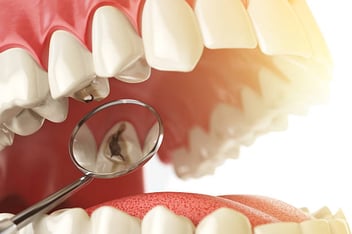The Importance of Dental Hygiene: A Pathway to Oral Health
Maintaining proper dental hygiene is a fundamental aspect of achieving and preserving excellent oral health. In this blog post, we will explore the significance of dental hygiene practices, including brushing, flossing, and regular dental check-ups. By understanding the importance of dental hygiene, you can embark on a journey towards optimal oral health and a radiant smile.
The Foundation of Dental Hygiene.
Dental hygiene serves as the foundation for a healthy mouth. Consistent and effective oral care practices prevent dental problems, such as cavities, gum disease, and bad breath. It involves a combination of proper brushing, flossing, and routine dental check-ups.
Brushing Techniques for a Healthy Smile
Proper brushing techniques are crucial in removing plaque, a sticky film that forms on teeth and harbors harmful bacteria. Discuss the following key points:
- Selecting the right toothbrush and toothpaste.
- Brushing at least twice a day for two minutes each time.
- Brushing all tooth surfaces, including the front, back, and chewing surfaces.
- Using gentle circular motions and a 45-degree angle towards the gumline.
- Brushing the tongue to eliminate bacteria and freshen breath.
The Power of Flossing
Flossing is an integral part of dental hygiene that cleans the areas between the teeth and along the gumline, where toothbrushes cannot reach. Highlight the following aspects:
- The importance of daily flossing.
- Using the correct flossing technique, such as a gentle back-and-forth motion.
- Properly curving the floss to reach under the gumline.
- Emphasizing the removal of plaque and food particles from these hard-to-reach areas.
The Role of Regular Dental
Check-ups Regular dental check-ups are vital for maintaining optimal oral health. Discuss the following points:
- The importance of professional dental cleanings to remove plaque and tartar.
- Dental examinations to detect early signs of dental issues.
- Oral cancer screenings as part of routine check-ups.
- X-rays to identify hidden dental problems.
- The recommendation for check-ups every six months, although it may vary based on individual needs.
Preventing Gum Disease and Tooth Decay
Proper dental hygiene significantly reduces the risk of gum disease and tooth decay. Explain how plaque buildup can lead to these issues and highlight the role of dental hygiene practices in preventing them. Discuss the importance of removing plaque, maintaining healthy gums, and preventing the formation of cavities.
Enhancing Oral Health with Mouthwash and Dental Products
While not a replacement for brushing and flossing, mouthwash can complement your oral hygiene routine. Discuss the benefits of mouthwash, such as reducing plaque, freshening breath, and promoting healthy gums. Also, emphasize the importance of selecting dental products, such as toothpaste and mouthwash, that contain fluoride for added protection against cavities.
Educating Children about Dental Hygiene
Children's dental hygiene practices are crucial for establishing a lifetime of oral health. Discuss age-appropriate dental care in Oxnard, including toothbrushing techniques, flossing, and regular dental visits. Emphasize the role of parents in instilling good oral hygiene habits and setting a positive example.
The Link Between Dental Hygiene and Overall Health
Highlight the connection between oral health and overall health. Discuss how poor dental hygiene has been linked to various health conditions, including heart disease, diabetes, respiratory infections, and pregnancy complications. Emphasize that maintaining good dental hygiene is not only beneficial for oral health but also contributes to overall well-being.
Committing to proper dental hygiene practices, including regular brushing, flossing, and dental check-ups, is essential for achieving and maintaining excellent oral health. By following these guidelines and making dental hygiene a priority, you can pave the way to a healthy smile and enjoy the numerous benefits that come with it.
The information provided in this blog post is for general informational purposes only and should not be considered as professional dental advice. Please consult with a qualified dentist for personalized advice and treatment options.
.png?width=80&height=80&name=Clove%20Dental%20White%20Small%20(28).png)



